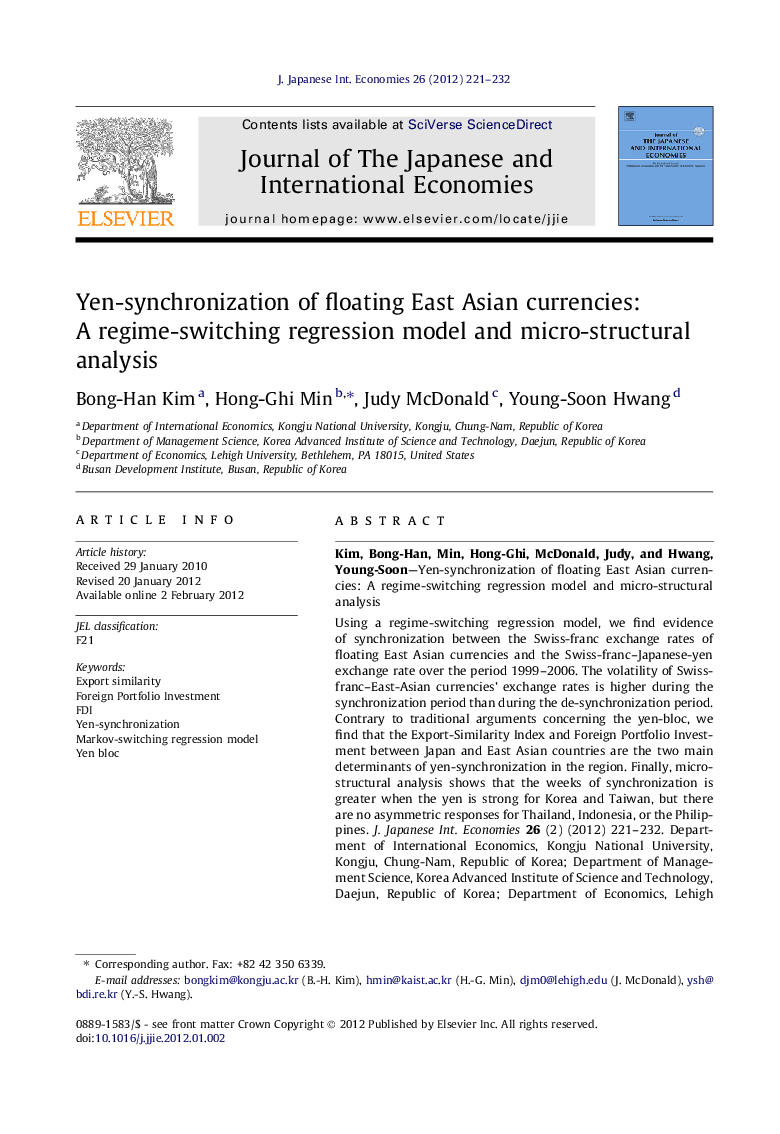| Article ID | Journal | Published Year | Pages | File Type |
|---|---|---|---|---|
| 964543 | Journal of the Japanese and International Economies | 2012 | 12 Pages |
Using a regime-switching regression model, we find evidence of synchronization between the Swiss-franc exchange rates of floating East Asian currencies and the Swiss-franc–Japanese-yen exchange rate over the period 1999–2006. The volatility of Swiss-franc–East-Asian currencies’ exchange rates is higher during the synchronization period than during the de-synchronization period. Contrary to traditional arguments concerning the yen-bloc, we find that the Export-Similarity Index and Foreign Portfolio Investment between Japan and East Asian countries are the two main determinants of yen-synchronization in the region. Finally, micro-structural analysis shows that the weeks of synchronization is greater when the yen is strong for Korea and Taiwan, but there are no asymmetric responses for Thailand, Indonesia, or the Philippines.
► We study yen-synchronization in East-Asian currencies over the period 1999–2006. ► We use a regime-switching regression model. ► Export-similarity and Foreign Portfolio Investment flows are the main determinants of yen-synchronization.
